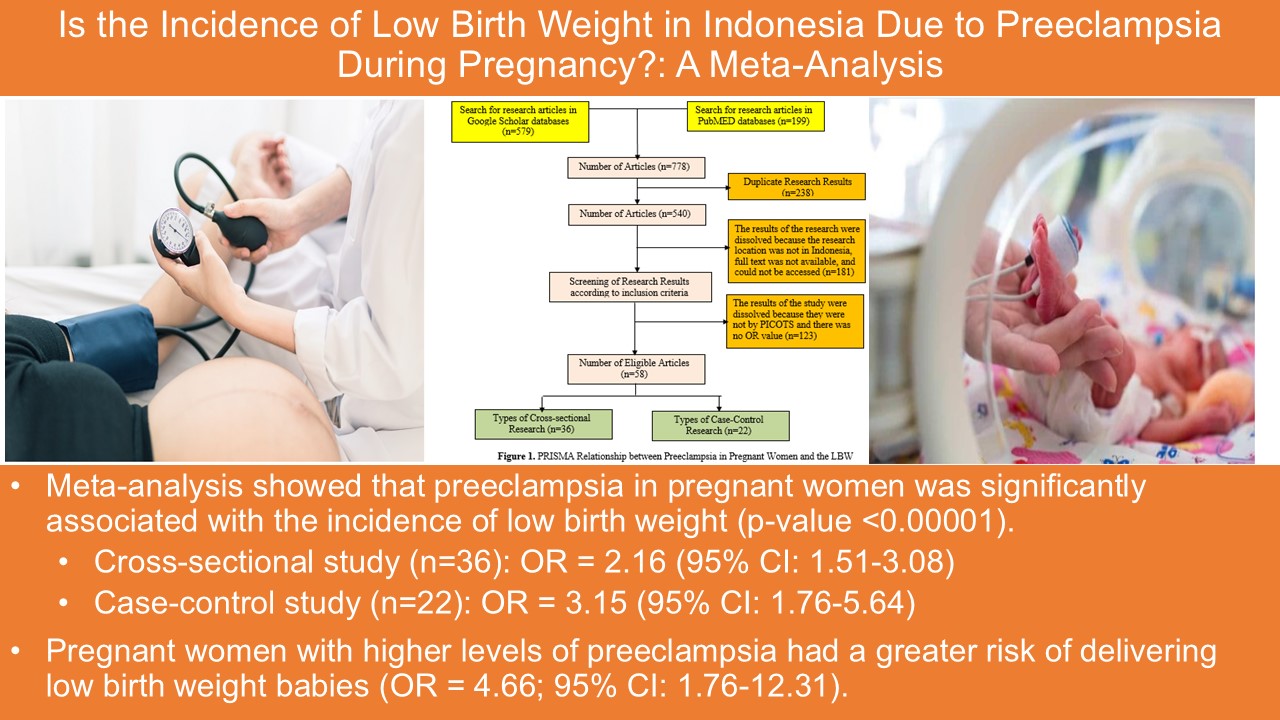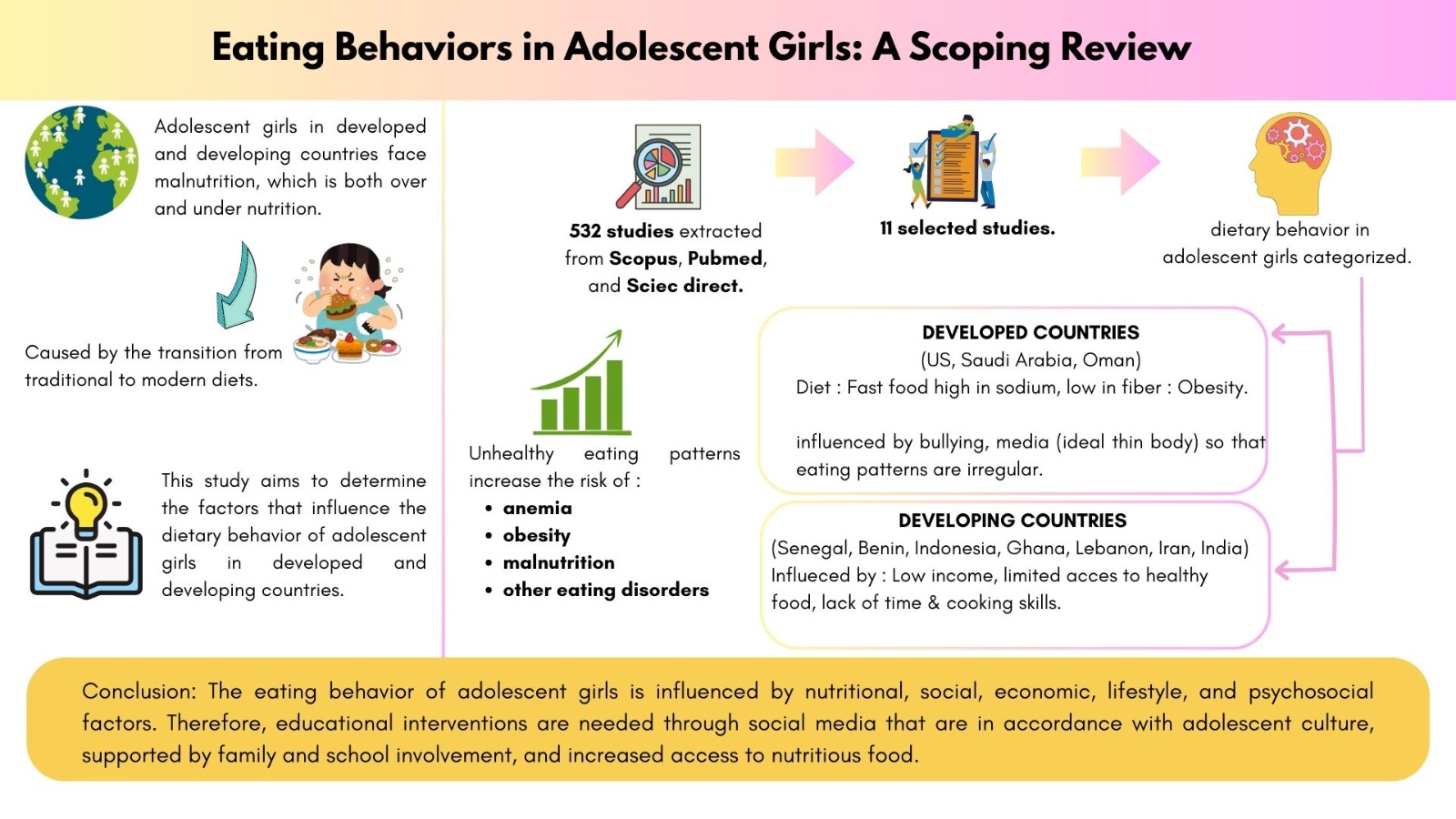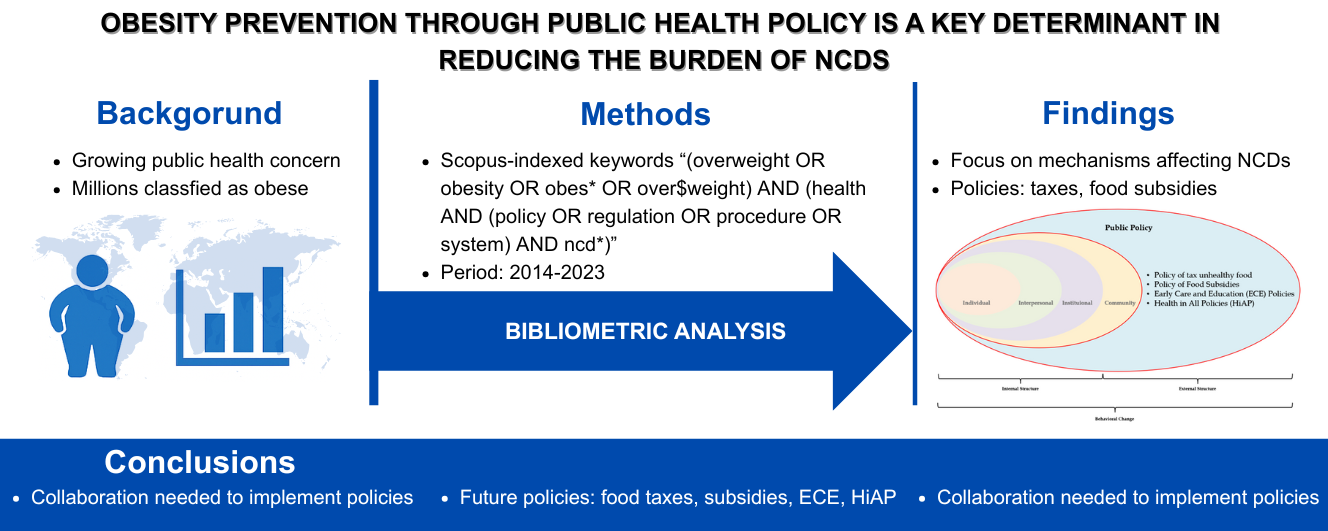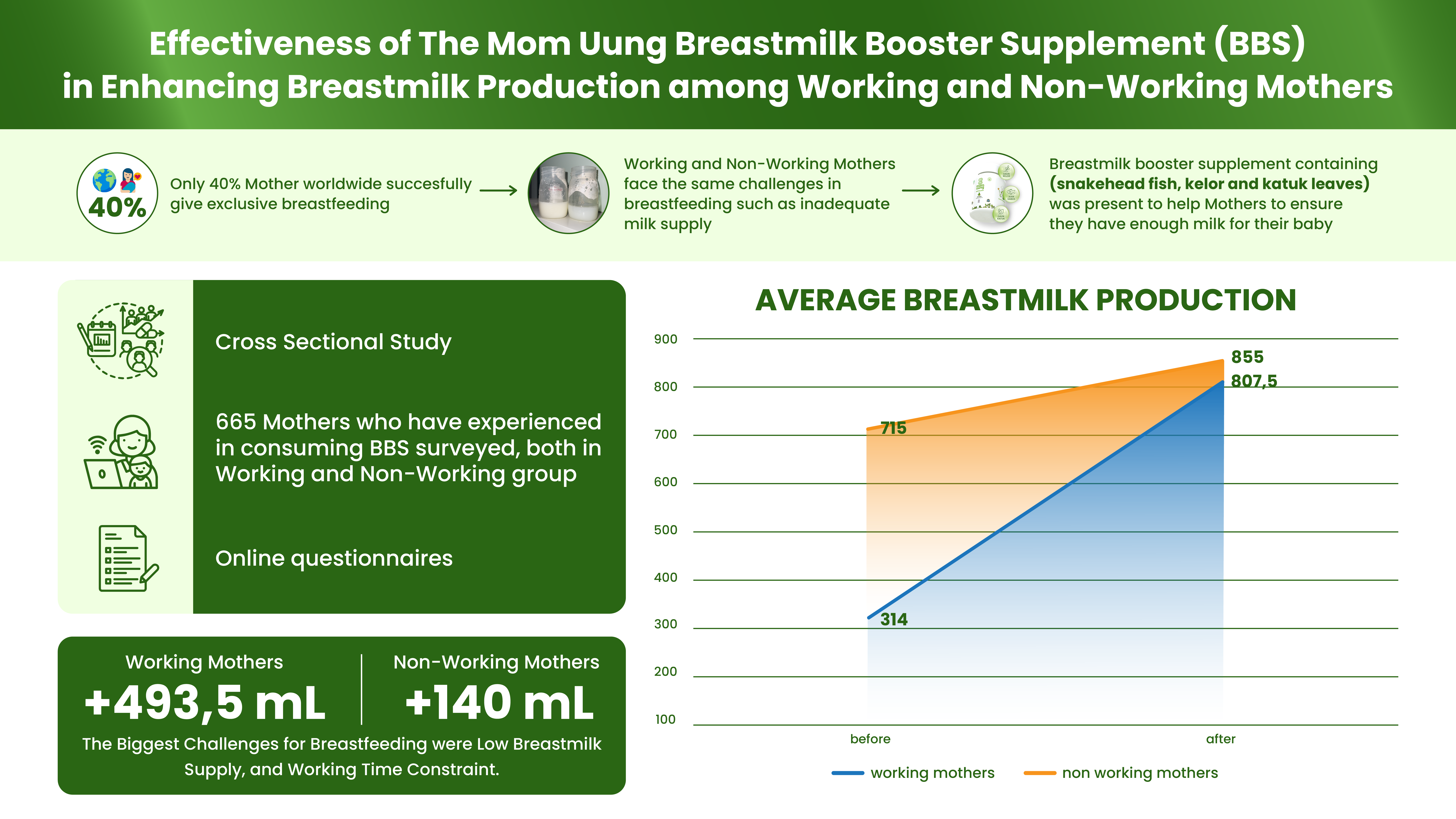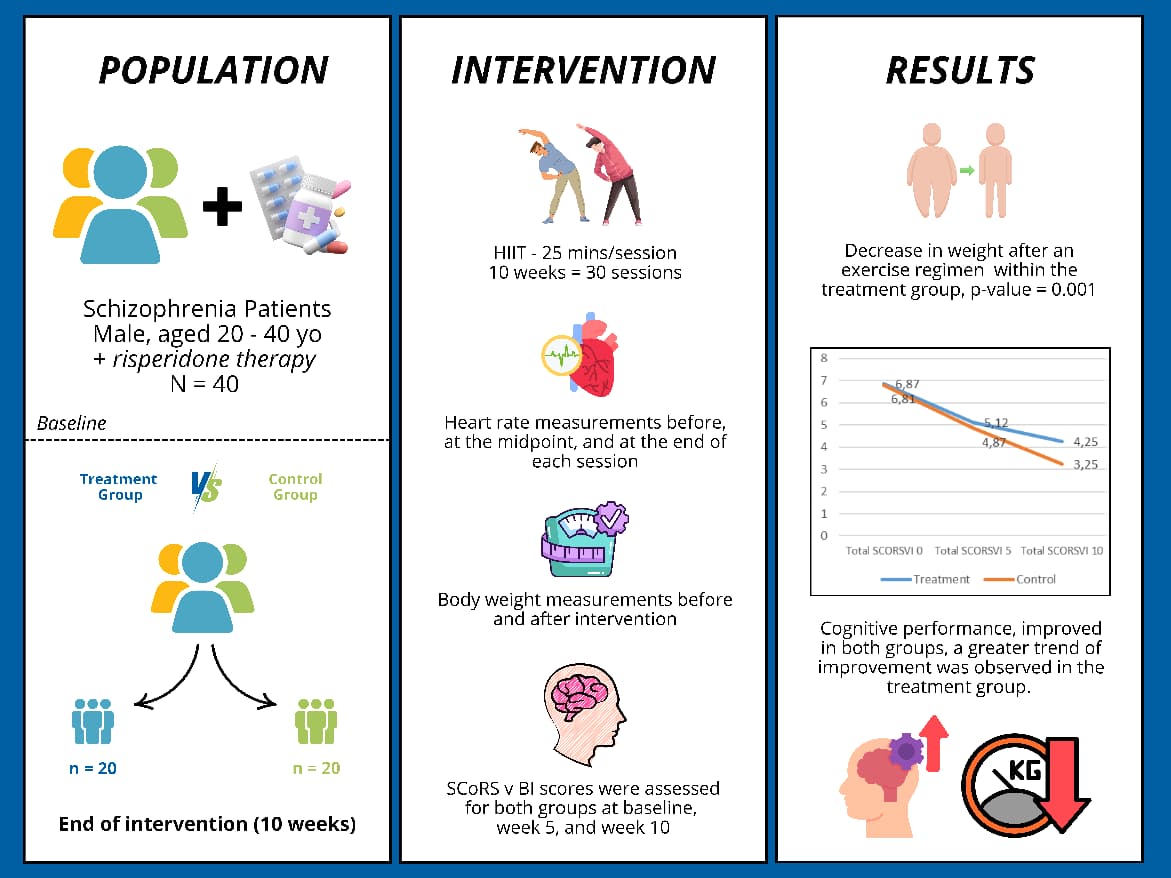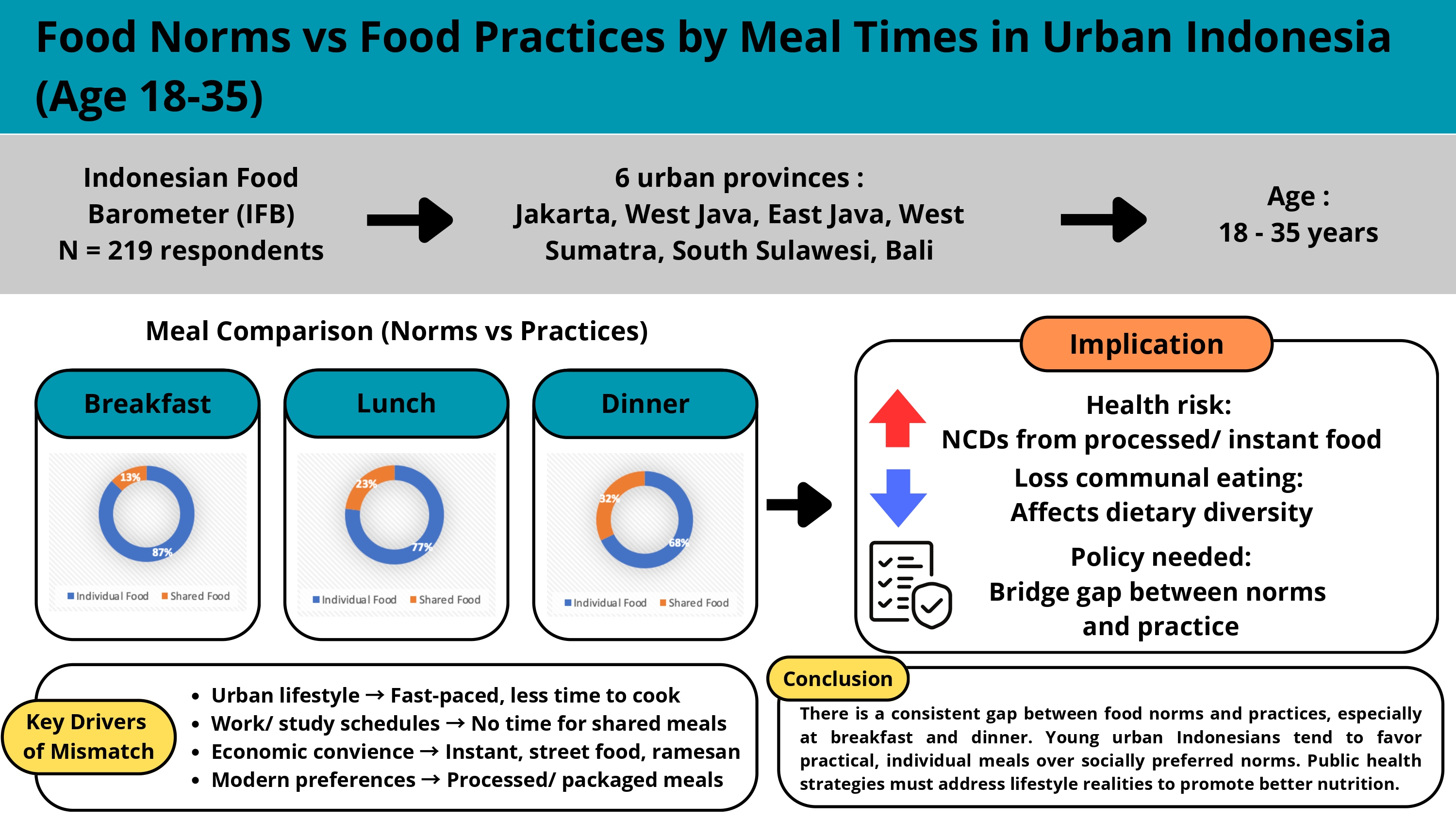The Effect of Nano Liquid Food Formula Made from Catfish and Moringa Flours on Oxidative Stress and Reduction of Burn Size in Rats
Efek Makanan Formula Cair Nano Berbahan Tepung Lele dan Kelor Terhadap Stres Oksidatif dan Pengurangan Luas Luka Bakar pada Tikus
Downloads
The high catabolism and inflammatory responses due to the burn injury can affect the increase of free radicals resulting in oxidative stress condition that delays the healing process of wounds. Providing protein can help to improve protein loss during catabolism, as for antioxidants, they prevent the occurrence of oxidative stress situation. One product of protein and antioxidants source that have been developed is a liquid food formula made from Catfish and Moringa flour which were processed using nanotechnology. This study aims to analyze the effect of liquid food formula made from Catfish and Moringa flour processed using nanotechnology on Sprague Dawley rats with burn injury, especially on malondialdehyde levels and reduction in wound area. The design of this study was an experimental study with 6 experimental groups, namely rats with aquadest intervention (K), 15% liquid food formula (MCB 15), 30% liquid food formula (MCB 30), 15% nano liquid food (MCN 15), and 30% nano liquid food (MCN 30) that given for 14 days. The One Way ANOVA test indicated that there was no significant difference in malondialdehyde levels among all experimental groups. However, the highest decrease in malondialdehyde levels occurred in the MCN 30 group. Moreover, the MCN 30 group also showed the highest reduction in the wound area and was significantly different from the control group, MCB 15, MCN 15, and MCK 30, but didn't show a significant difference from the MCB 30 group based on the One Way ANOVA test and a further test of Duncan.
Abdullahi, A., Amini-Nik, S., & Jeschke, M. G. (2014). Animal models in burn research. NIH Public Access. Cell Mol Life Sci., 49(18), 1841–1850. doi: 10.1007/s00018-014-1612-5.Animal.
Affandi, M. M. R. M. M., Julianto, T., & Majeed, A. B. A. (2012). Enhanced oral bioavailability of astaxanthin with droplet size reduction. Food Sci. Technol. Res, 18(4), 549-554. doi: 10.3136/fstr.18.549.
Akbari, H., Fatemi, M. J., Iranpour, M., & Khodarahmi, A. (2015). The healing effect of nettle extract on second degree burn wounds. World J Plast Surg, 4(1), 3–8.
Arief, H., & Widodo, M. A. (2018). Peranan stres oksidatif pada proses penyembuhan luka. Jurnal Ilmiah Kedokteran Wijaya Kusuma, 5(2), 22-29.
Arifin, W. N., & Zahiruddin, W. M. (2017). Sample size calculation in animal studies using resource equation approach. Malaysian Journal of Medical Sciences, 24(5), 101–105. doi: 10.21315/mjms2017.24.5.11.
Arshad, R., Gulshad, L., Haq, I. U., Farooq, M. A., Al"Farga, A., Siddique, R., & Karrar, E. (2021). Nanotechnology: A novel tool to enhance the bioavailability of micronutrients. Food Science & Nutrition, 9(6), 3354-3361. doi: 10.1002/fsn3.2311.
Ayala, A., Muñoz, M. F., & Argüelles, S. (2014). Lipid peroxidation : production, metabolism, and signaling mechanisms of malondialdehyde and 4-hydroxy-2-nonenal. Oxid Med Cell Longev, 2014(6), 1-31. doi: 10.1155/2014/360438.
Azevedo, I. M., Araujo-Filho, I., Teixeira, M. M. A., Moreira, M. D. F. C., & Medeiros, A. C. (2018). Wound healing of diabetic rats treated with Moringa. Acta Cir Bras, 33(9), 799–805. doi: 10.1590/s0102-865020180090000008.
Barchitta, M., Maugeri, A., Favara, G., Lio, R. M. S., Evola, G., Agodi, A., & Basile, G. (2019). Nutrition and wound healing: An overview focusing on the beneficial effects of curcumin. Int. J. Mol. Sci, 20(5), 1-14. doi: 10.3390/ijms20051119.
Catherine, C., & Ferdinal, F. (2018). Pengaruh hipoksia sistemik kronik terhadap kadar malondialdehid (MDA) pada darah dan jaringan ginjal tikus Sprague dawley. Tarumanagara Medical Journal, 1(1), 54-58.
Erwiyani, A. R., Haswan, D., Agasi, A., & Karminingtyas, S. R. (2020). Pengaruh sediaan gel dan krim ekstrak etanol daun kelor terhadap penurunan luas luka bakar pada tikus. Indonesian Journal of Pharmacy and Natural Product, 3(2), 41–52. doi: 10.35473/ijpnp.v3i2.666.
Gauglitz, G. G. (2013). Wound healing and wound care. In M. G. Jeschke, L. P. Kamolz & S. Shahrokhi (Eds.), Burn care and treatment (pp. 31-42). Wien, Austria: Springer.
Hendy, H., & Lister, I. N. E. (2019). Tingkat efektivitas penyembuhan luka bakar derajat IIA dengan pemberian madu dan pemberian salep nebacetin pada tikus putih (Rattus norvegicus). Jurnal Kedokteran Dan Kesehatan, 15(2), 130-134. doi: 10.24853/jkk.15.2.130-134.
Jeschke, M. G. (2013). Nutrition of the burned patient and treatment of the hypermetabolic response. In M. G. Jeschke, L. P. Kamolz & S. Shahrokhi (Eds.), Burn care and treatment (pp. 91-110). Wien, Austria: Springer.
Jeschke, M. G., Baar, M. E., Choudhry, M. A., Chung, K. K., Gibran, N. S., & Logsetty, S. (2020). Burn injury. Nature Reviews Disease Primers, 6(11), 1-25. doi: 10.1038/s41572-020-0145-5.
Kementerian Kesehatan Republik Indonesia. (2018). Laporan Nasional RISKESDAS 2018. Kementrian Kesehatan RI, 1–582. Diakses dari https://dinkes.kalbarprov.go.id/wp-content/uploads/2019/03/Laporan-Riskesdas-2018-Nasional.pdf
Krisnadi, D. (2015). Kelor super nutrisi. Blora, Indonesia: Moringa Indonesia LSM-MEPELING.
Kumar, R., Thakur, A. K., Chaudhari, P., & Banerjee, N. (2021). Particle size reduction techniques of pharmaceutical compounds for the enhancement of their dissolution rate and bioavailability. Journal of Pharmaceutical Innovation, 17, 333-352. doi: 10.1007/s12247-020-09530-5.
Kurahashi, T., & Fujii, J. (2015). Roles of antioxidative enzymes in wound healing. Journal of Developmental Biology, 3(2), 57–70. doi: 10.3390/jdb3020057.
Kurniawati, E. (2014). Tatalaksana nutrisi pada pasien luka bakar berat. (Serial kasus, Universitas Indonesia, Jakarta, Indonesia). Diakses dari https://adoc.pub/tatalaksana-nutrisi-pada-pasien-luka-bakar-berat-serial-kasus.html
Kushwaha, S., Chawla, P., & Kochhar, A. (2014). Effect of supplementation of drumstick (Moringa oleifera) and amaranth (Amaranthus tricolor) leaves powder on antioxidant profile and oxidative status among postmenopausal women. Journal of Food Science and Technology, 51(11), 3464–3469. doi: 10.1007/s13197-012-0859-9.
Lasmadasari. (2013). Efektifitas pemberian oral dan topikal gel ekstrak daun kelor (Moringa oleifera) dalam penyembuhan luka sayat pada tikus putih (Rattus norvegicus) (Master's thesis, Universitas Muhammadiyah Yogyakarta, Yogyakarta, Indonesia). Diakses dari http://thesis.umy.ac.id/datapublik/t29886.pdf
Lee, G., & Goosens, K. A. (2015). Sampling blood from the lateral tail vein of the rat. Journal of Visualized Experiments, 2015(99), 1–5. doi: 10.3791/52766.
Makalalag, I. W., & Wullur, A. (2013). Uji ekstrak daun binahong (Anredera cordifolia steen.) terhadap kadar gula darah pada tikus putih jantan galur wistar (Rattus norvegicus) yang diinduksi sukrosa. Pharmacon, 2(1), 28–35.
Marlianti, Y., Kasim, A., Asben, A., & Yeni, G. (2020). Kenaikan nilai aktivitas antioksidan nanokatekin dibanding katekin sediaan konvensional dan peluang aplikasinya pada hard candy. Jurnal Litbang Industri, 10(1), 7-14. doi: 10.24960/jli.v10i1.6111.7-14.
Marta, E. O. (2017). Modifikasi makanan cair instan tinggi perotein dan kalsium dengan penambahan tepung ikan lele (Clarias gariepinus) dan daun kelor (Moringa oleifera) (Undergraduate thesis, IPB University, Bogor, Indonesia). Diakses dari https://repository.ipb.ac.id/handle/123456789/88939
Mehrabani, D., Farjam, M., Geramizadeh, B., & Tanideh, N. (2015). The healing effect of curcumin on burn wounds in rat. World J Plast Surg, 4(1), 29-35.
Mervina, Kusharto C. M., & Marliyati S. A. (2012). Formulasi biskuit dengan substitusi tepung ikan lele dumbo (Clarias gariepinus) dan isolat protein kedelai (Glycine max) sebagai makanan potensial untuk anak balita gizi kurang. Jurnal Teknologi Dan Industri Pangan, 23(1), 9-16. Diakses dari https://journal.ipb.ac.id/index.php/jtip/article/view/5287
Moyo, B., Oyedemi, S., Masika, P. J., & Muchenje, V. (2012). Polyphenolic content and antioxidant properties of Moringa oleifera leaf extracts and enzymatic activity of liver from goats supplemented with Moringa oleifera leaves/sunflower seed cake. Meat Science, 91(4), 441–447. doi: 10.1016/j.meatsci.2012.02.029.
Owoade, A. O., Adetutu, A., & Aborisade, A. B. (2017). Protective effects of moringa oleifera leaves against oxidative stress in diabetic rats. World J Pharm Sci, 5(11), 64-71.
Pintaudi, A. M., Tesoriere, L., D'Arpa, N., D'Amelio, L., D'Arpa, D., Bongiorno, A., Masellis, M., & Livrea, M. A. (2000). Oxidative stress after moderate to extensive burning in humans. Free Rad. Res, 33(2), 139-146. doi: 10.1080/10715760000300691.
Prasetya, A., & Suhaymi, E. (2020). Perbandingan efektivitas povidone iodine 10% dengan sari kurma terhadap lama penyembuhan luka bakar pada tikus putih (Rattus norvegicus L.) jantan galur wistar. Jurnal Pandu Husada, 1(3), 178-183. doi: 10.30596/jph.v1i3.4909.
Pratiwi, L. (2020). Pengaruh pemberian salep kolagen hidrolisat ikan sebagai penyembuhan luka bakar derajat IIb berdasarkan ekspresi fibroblast growth factor 2 (FGF-2) dan fibroblas pada tikus putih (Rattus norvegicus). Media Kedokteran Hewan, 31(2), 52-63. doi: 10.20473/mkh.v31i2.2020.52-63.
Prauchner, C. A. (2017). Oxidative stress in sepsis: Pathophysiological implications justifying antioxidant co-therapy. Burns, 43(3), 471–485. doi: 10.1016/j.burns.2016.09.023.
Purnama, D., Masdar, H., & Rahayu, W. (2013). Perbandingan pemberian krim ekstrak etanol daun senduduk, MEBO, dan moist dressing terhadap penyebuhan luka bakar pada tikus putih. Jurnal Fakultas Kedokteran Unri, 1–14.
Rahmadhani, N., Yudaniayanti, I. S., Saputro, A. L., Triakoso, N., Wibawati, P. A., & Yudhana, A. (2020). Efektivitas krim ekstrak buah naga merah (Hylocereus polyrhizus) dalam meningkatkan jumlah sel fibroblas luka bakar derajat II pada tikus putih (Rattus norvegicus). Jurnal Medik Veteriner, 3(1), 65-75. doi: 10.20473/jmv.vol3.iss1.2020.65-75.
Ridwan, E. (2013). Etika pemanfaatan hewan percobaan dalam penelitian kesehatan Ethical use of animals in medical research. J Indon Med Assoc, 63(3), 112–116. Diakses dari http://docshare01.docshare.tips/files/30994/309947046.pdf
Rollins, C., Huettner, F., & Neumeister, M. W. (2017). Clinician's guide to nutritional therapy following major burn injury. Clinics in Plastic Surgery, 44(3), 555–566. doi: 10.1016/j.cps.2017.02.014.
Savitri, N. M. A., Kurniawaty, E., & Warganegara, E. (2019). Perbedaan epitel dan kolagen pada luka bakar derajat II antara pemberian ekstrak sel punca mesenkimal tali pusat manusia dengan silver sulfadiazine pada tikus putih jantan (Rattus norvegicus) galur Sprague dawley. Medical Journal of Lampung University, 8(2), 181-186.
Srimiati, M., Kusharto, C. M., Dewi, M., Yunitaningrum, U., Shofiyyatunnisaak, N. A., & Aitonam, M. (2020). Characterization of high protein liquid food formula containing catfish (Clarias gariepinus sp) flour and moringa (Moringa oleifera) leaf powder for burn patients. Malaysian Journal of Medicine and Health Sciences, 16(4), 148–152.
Sterling, J. P., & Lombardi, V. C. (2021). Decreasing the likelihood of multiple organ dysfunction syndrome in burn injury with early antioxidant treatment. Antioxidants, 10(8), 1-11. doi: 10.3390/antiox10081192.
Sukmawati, Yuliet, & Hardani, R. (2015). Uji aktivitas antiinflamasi ekstrak etanol daun pisang ambon (Musa paradisiaca L.) terhadap tikus putih (Rattus norvegicus L.) yang diinduksi karagenan. GALENIKA Journal of Pharmacy, 1(2), 126–132. doi: 10.22487/j24428744.2015.v1.i2.6244.
Ulviani, F., Yusriadi, Y., & Khaerati, K. (2016). Pengaruh gel ekstrak daun sirih merah (Piper crocatum Ruiz & Pav) terhadap penyembuhan luka bakar pada kelinci (Oryctolagus cuniculus). Jurnal Farmasi Galenika (Galenika Journal of Pharmacy) (e-Journal), 2(2), 103–110. doi: 10.22487/j24428744.2016.v2.i2.5977.
Wang, S., Su, R., Nie, S., Sun, M., Zhang, J., Wu, D., & Moustaid-Moussa, N. (2014). Application of nanotechnology in improving bioavailability and bioactivity of diet-derived phytochemicals. Journal of Nutritional Biochemistry, 25(4), 363–376. doi: 10.1016/j.jnutbio.2013.10.002.
WHO. (2012). WHO biennal report 2010/2011: Violence, injury and disability. Geneva, Switzerland: WHO.
World Health Organization. (2018). Burns | WHO. Diakses dari https://www.who.int/news-room/fact-sheets/detail/burns
Wu, K., Wu, X., Guo, J., Jiao, Y., & Zhou, C. (2021). Facile polyphenol – europium assembly enabled functional poly (l-Lactic Acid) nanofiber mats with enhanced antioxidation and angiogenesis for accelerated wound healing. Advanced Healthcare Materials, 2100793, 1–13. doi: 10.1002/adhm.202100793.
Yadav, S., Mishra, A. P., Kumar, S., Negi, A., Asha, & Maurya, V. K. (2021). Herbal wound healing agents. In C. Egbuna, A. P. Mishra & M. R. Goyal (Eds.), Preparation of phytopharmaceuticals for the management of disorders (pp. 169–184). Cambridge, United States: Academic Press.
Yuniati, W. M., & Lukiswanto, B. S. (2019). Potensi salep epigallocatechin gallate terhadap proses kesembuhan luka bakar derajat II pada kulit tikus putih . Jurnal Veteriner, 20(1), 1. doi: 10.19087/jveteriner.2019.20.1.1.
Zhang, J., Fu, X., Li, W., Li, H., Ying, Z., Liu, X., & Yin, L. (2020). Enhancement of nutritional soy protein and peptide supplementation on skin repair in rats. Journal of Functional Food, 75(9), 1-9. doi: 10.1016/j.jff.2020.104231.

This work is licensed under a Creative Commons Attribution-NonCommercial-ShareAlike 4.0 International License.
- MEDIA GIZI INDONESIA Journal is the copyright owner of all materials published on this website.
- The formal legal provisions for access to digital articles of this electronic journal are subject to the terms of the Creative Commons Attribution-NonCommercial-ShareAlike license (CC BY-NC-SA 4.0), which means that MEDIA GIZI INDONESIA Journal and readers reserve the right to save, transmit media / format, manage in database, maintain, and publish articles as long as it continues to include the name of the Author.
- Printed and published print and electronic manuscripts are open access for educational, research and library purposes. In addition to these objectives, the editorial board shall not be liable for violations of copyright law.


2.png)















